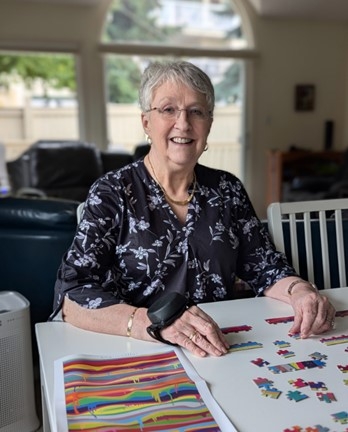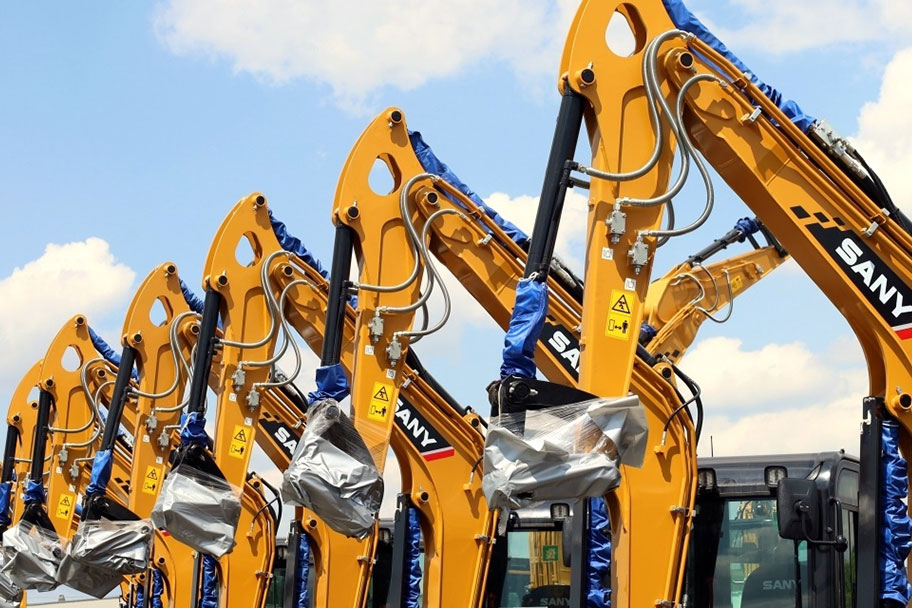Exploring Hong Kong as the Gateway to Asia’s AgeTech Market
Interview with Emile Maamary, Co Founder and Chief Marketing Officer of Steadiwear
Steadiwear, a Canadian medtech firm, sees Hong Kong as offering a strategic entry point to the wider Asian markets for its tremor‑reducing technology, with the region’s ageing population and favourable reimbursement pathways ensuring growing demand for assistive devices.
As the average age of populations across Asia rises, one Canadian medtech company is evaluating distribution opportunities in a number of the region’s individual markets, including Hong Kong, South Korea, Japan, Thailand and Australia. Within this, Hong Kong is seen as providing a strategic entry point for expansion across the region.
Factoring in the significant variations in regulatory requirements and cultural preferences across Asia, the Toronto‑based firm has opted to work via a series of local distributors. This was a key consideration in the recent launch of its third‑generation hand tremor‑reducing device, which is already gaining traction in Hong Kong thanks to the efforts of the company’s existing distribution partners.
Detailing how the company had gone about appointing distributors, Emile Maamary, Steadiwear’s Co‑Founder and Chief Marketing Officer, said: “Our initial connection with our Hong Kong‑based distributors came organically. This followed several distributors discovering Steadiwear through our online and offline activities – primarily via our website, international media coverage and conference participation.”
This led to one of the company’s key existing partners – a distributor specialising in assistive technologies and mobility solutions for seniors and patients with neurodegenerative conditions – recognising the clear market opportunity represented by Steadiwear’s latest innovations.
Outlining how this progressed, Maamary said: “The distributor in question reached out after identifying a gap in the market for non‑invasive tremor management devices and seeing the clinical value of the Steadi-3. From our point of view, this inbound interest from international partners came as further confirmation of the strong global demand for tremor solutions.”
On an ongoing basis, Hong Kong has emerged as a key market for Steadiwear. Unlike a number of other jurisdictions, where patients must bear the full cost of assistive devices, the city’s sophisticated healthcare ecosystem offers multiple ways medical devices can be subsidised.
Essentially, Hong Kong operates a dual‑track system through its public and private healthcare sectors. In the public sector, the Hospital Authority provides devices either free or at subsidised rates. In the private sector, meanwhile, coverage largely comes through insurance plans, including the Voluntary Health Insurance Scheme.
To date, Steadiwear’s devices have not been formally integrated into Hong Kong’s public healthcare system or fallen within the remit of local insurance providers. Looking to the future, though, Maamary said: “Our [Hong Kong] distributor is exploring broader market access options, including potential partnerships with local health authorities and insurers to assess clinical utility and cost‑effectiveness.”
Getting a grip: The Steadi 3 can boost the coordination and dexterity of those with age related tremors. Source: Steadiwear
At present, with Steadi-3, Steadiwear’s latest product, retailing for about US$800 in North America, it is clear that the prospect of subsidies or reimbursement could significantly boost adoption rates. In terms of its benefits, it has proved remarkably effective in the treatment of people with Parkinson's Disease and essential tremors. Indeed, according to a single‑blind placebo‑controlled study, 85% of participants reported significant improvement in their conditions after using the system.
Distribution-led approach
Worn on the back of the hand in the form of a large fingerless glove, the Steadi-3 is battery‑free and made in China. With distribution arrangements already in place in North America, distributors from several Asian markets — including Hong Kong — have also expressed an interest in representing the product.
Having its distribution network in place has allowed Steadiwear — a company comprising a small Canada‑based team— to expand quickly into Asia.
Detailing the operational requirements, Maamary said: “While working with distributors offers scalability and regional expertise, the process is not without its challenges. These have ranged from maintaining consistent brand messaging to getting timely feedback from end‑users, as well as tackling the issue of distributors favouring higher‑volume products.
“In addition, there is a concern that spreading our interests too thin could bite us on the back. In order to reduce such risks, we have prioritised establishing relationships with companies that share our values, and while also providing the kind of marketing and training support that will help drive success locally.”
According to Maamary, Steadiwear is particularly interested in partnering with distributors with a solid track record in elderly care and / or neurology, particularly those with regulatory expertise and a similar culture.
As part of its commitment to optimising its market prospects, members of the Steadiwear team are regular attendees at trade shows and healthcare exhibitions, where they actively seek out potential buyers and distributors. At the same time, the company also reaches out to neurologists and rehab centres in order to arrange product demonstrations.
Many patients have reported significant improvement after making use of the Steadi‑3. Source: Steadiwear
Manufacturing connections
While Steadiwear’s research and development activity largely takes place in Toronto, the company also maintains a manufacturing operation in China, allowing it to capitalise on supply chain efficiencies when serving the Hong Kong market. Ultimately, this should result in faster fulfillment and lower shipping costs for orders destined for the city.
The Steadi‑3: Assisting individuals with hand tremors as they undertake daily tasks. Source: Steadiwear
Retailing at US$800, Steadiwear’s Steadi-3 has been positioned to appeal to Hong Kong’s more elderly consumers in terms of both affordability and effectiveness. Detailing the thinking here, Maamary said: “With competitor products largely in the US$5,000‑7,000 price range, the Steadi-3 is significantly cheaper, while also functioning as a highly effective, non‑invasive and battery‑free alternative.
“Quite simply, it is the most affordable and effective unit at this price point. It's also the only non‑intrusive system of this quality, with many competitor devices tending to be battery‑operated and taking the form of unwieldy, weighted gloves.”
Asia’s silver tech boom
As the average age of Asia’s population rises, the demand for such assistive tech as the Steadi-3 is almost certain to increase. In the case of Hong Kong, the city is home to approximately one million people who may require some form of assistive technology due to ageing and / or disability, according to research conducted by the Hong Kong Polytechnic University. At the same time, the medtech market in Hong Kong is set to be worth some US$1.4 billion by 2029, according to a recent forecast by Statista.
Mainland China, too, is seen as set to be a substantial market for disability aids, again largely on account of its rapidly growing number of elderly citizens. In all, the country has now registered three times more patent applications for assistive devices than the US or Japan, according to a WIPO report.
In terms of future prospects, Steadiwear has already begun development on a fourth‑generation device, according to Maamary. Although any such innovation will undoubtedly benefit from Canada’s supportive R&D environment, there are concerns that increasingly complex cross‑border logistics may leave it vulnerable to geopolitical and trade tensions on the manufacturing front.
Despite that, the company has no plans to relocate its manufacturing away from its current Mainland site. This is largely because of Mainland China’s well‑established medtech supply chain and the highly competitive nature of the country’s manufacturing costs.
Addressing the kind of moves likely to mitigate such concerns, Maamary said: “At present, we are prioritising building relationships with regional distributors. At the same time, we have come to view Hong Kong as a strategic launchpad for our broader Asian expansion thanks to its proximity to Mainland China and many of the ASEAN markets, as well as its world‑class logistics infrastructure, bilingual business environment and early adopter healthcare institutions.”
In addition, the company is actively exploring distribution deals in Japan and South Korea, a development largely driven by their advanced healthcare systems and ageing populations. According to Maamary, the potential of Singapore as a regulatory hub is also being evaluated, while Japan’s demand for tremor care solutions is seen as set to skyrocket in line with its changing demographics.
Expanding on the significance of such demographic shifts, Maamary said: “About 5% of the over‑60s develop some kind of tremor. In line with that, our research shows there are seven million people with essential tremor in America alone, as well as at least another million with Parkinson’s.
“The high medication dropout rate has also driven a need for alternatives, while the growing burden on caregivers is acting to drive interest in self‑managed solutions. As assistive technologies have become more socially acceptable, with elderly populations also becoming more comfortable with technology, many of Asia’s family‑centric care models have begun to integrate innovative fixes.”
Drawing an overall conclusion as to future market potential, Maamary said: “Tech‑savvy elder populations and government ageing policies are driving innovation. At the same time, as health systems shift towards home‑based, preventative care, and the process of digital health integration continues, demand looks certain to grow.”
Original article published in https://hkmb.hktdc.com







